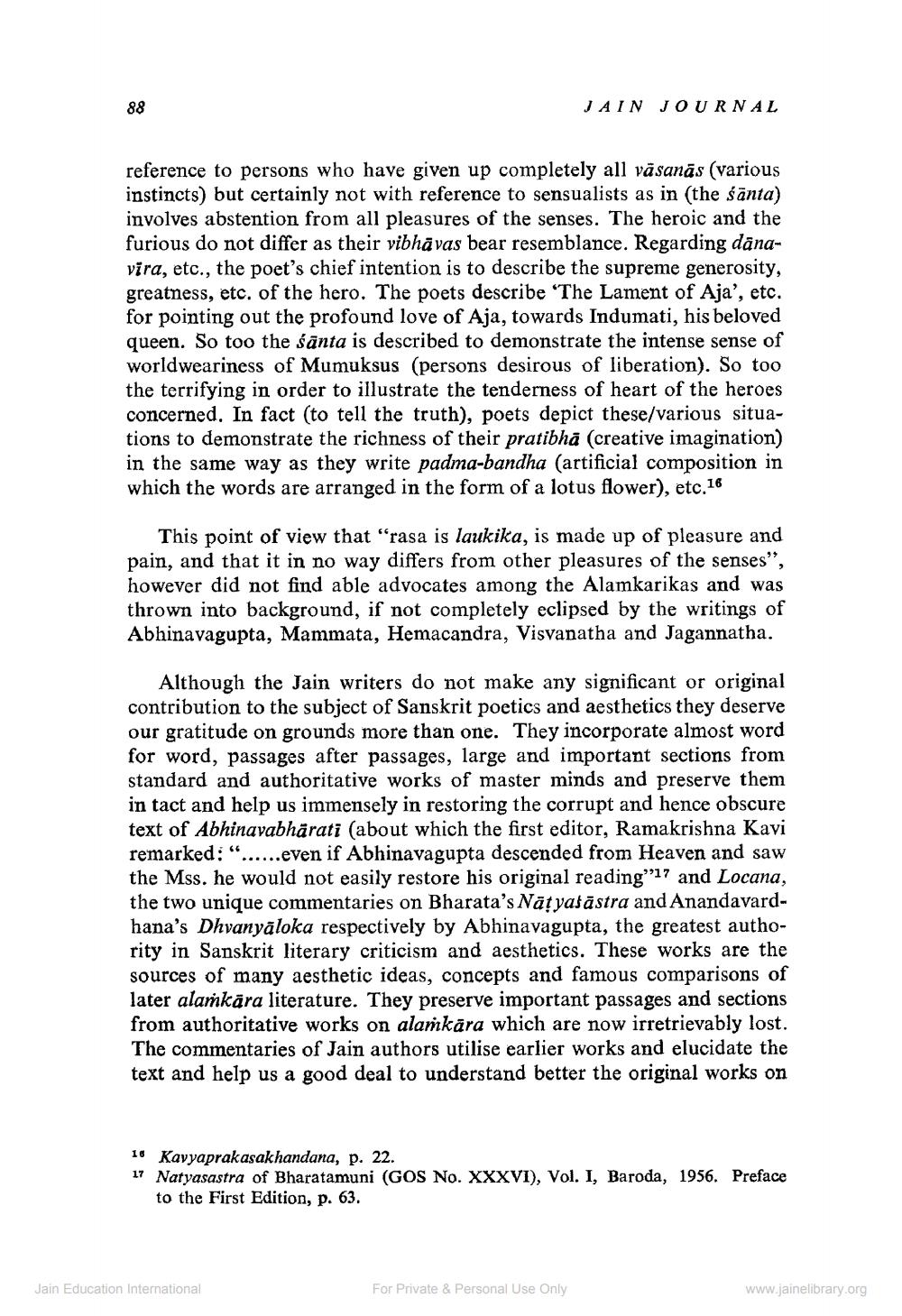________________
88
JAIN JOURNAL
reference to persons who have given up completely all vāsanās (various instincts) but certainly not with reference to sensualists as in (the śānta) involves abstention from all pleasures of the senses. The heroic and the furious do not differ as their vibhāvas bear resemblance. Regarding danavira, etc., the poet's chief intention is to describe the supreme generosity, greatness, etc. of the hero. The poets describe 'The Lament of Aja', etc. for pointing out the profound love of Aja, towards Indumati, his beloved queen. So too the śānta is described to demonstrate the intense sense of worldweariness of Mumuksus (persons desirous of liberation). So too the terrifying in order to illustrate the tenderness of heart of the heroes concerned. In fact (to tell the truth), poets depict these/various situations to demonstrate the richness of their pratibha (creative imagination) in the same way as they write padma-bandha (artificial composition in which the words are arranged in the form of a lotus flower), etc. 16
This point of view that "rasa is laukika, is made up of pleasure and pain, and that it in no way differs from other pleasures of the senses”, however did not find able advocates among the Alamkarikas and was thrown into background, if not completely eclipsed by the writings of Abhinavagupta, Mammata, Hemacandra, Visvanatha and Jagannatha.
Although the Jain writers do not make any significant or original contribution to the subject of Sanskrit poetics and aesthetics they deserve our gratitude on grounds more than one. They incorporate almost word for word, passages after passages, large and important sections from standard and authoritative works of master minds and preserve them in tact and help us immensely in restoring the corrupt and hence obscure text of Abhinavabhärati (about which the first editor, Ramakrishna Kavi remarked: "......even if Abhinavagupta descended from Heaven and saw the Mss. he would not easily restore his original reading”17 and Locana, the two unique commentaries on Bharata's Natyafāstra and Anandavardhana's Dhvanyāloka respectively by Abhinavagupta, the greatest authority in Sanskrit literary criticism and aesthetics. These works are the sources of many aesthetic ideas, concepts and famous comparisons of later alaṁkāra literature. They preserve important passages and sections from authoritative works on alamkāra which are now irretrievably lost. The commentaries of Jain authors utilise earlier works and elucidate the text and help us a good deal to understand better the original works on
16 Kavyaprakasakhandana, p. 22. 17 Natyasastra of Bharatamuni (GOS No. XXXVI), Vol. I, Baroda, 1956. Preface
to the First Edition, p. 63.
Jain Education International
For Private & Personal Use Only
www.jainelibrary.org




